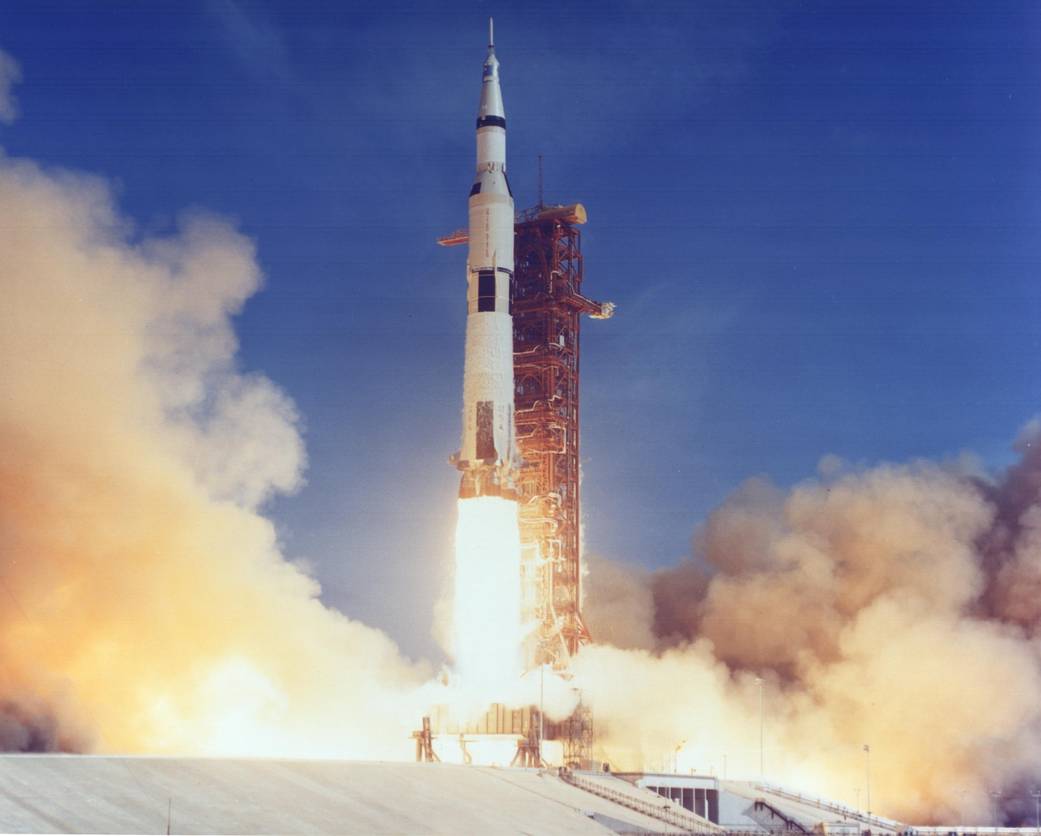If Earth Were 50 Percent Larger, We Might Be Stuck Here

To many people, mankind's "giant leap" is synonymous with Neil Armstrong's "small step" onto the surface of the Moon.
NASA astronaut, chemical engineer, and renaissance man Donald Pettit disagrees. The leap, he says, actually occurred far closer to home.
"The giant leap for mankind is not the first step on the Moon, but in attaining Earth orbit," he wrote in 2012.
This first step, about 400 kilometers away from Earth, requires half of the total energy needed to go to the surface of Mars. Destinations between the Earth and the moon are only a fraction of that required to simply get into Earth orbit. The cost of this first step is due to the magnitude of Earth’s gravity. And physics dictates that paying a penny less than the full cost will result in Earth repossessing your spacecraft in a not-so-gentle way.
Gravity's smothering hold on Earth's inhabitants means that 80 to 90 percent of the mass of current rockets must be taken up by the actual propellant burned to lift the rocket into space! According to Pettit, this means that sitting atop a rocket is more precarious than perching oneself atop a bottle of gasoline. It also means that there isn't much room for stuff like food, computers, scientific experiments and astronauts.
Despite these drawbacks, we should count ourselves lucky.
"If the radius of our planet were larger, there could be a point at which an Earth-escaping rocket could not be built," Pettit says.
Using the Tsiolkovsky rocket equation, he calculates what that point would be.
Breaking space news, the latest updates on rocket launches, skywatching events and more!
Let us assume that building a rocket at 96 percent propellant (4 percent rocket)... is the practical limit for launch vehicle engineering. Let us also choose hydrogen-oxygen, the most energetic chemical propellant known and currently capable of use in a human-rated rocket engine. By plugging these numbers into the rocket equation, we can transform the calculated escape velocity into its equivalent planetary radius. That radius would be about 9,680 kilometers (Earth is 6,670 km). If our planet was 50 percent larger in diameter, we would not be able to venture into space, at least using rockets for transport.
Pettit's thought experiment underscores a couple points. First, as successful as rockets have been, serving as humanity's transports to the stars, they are woefully inefficient. If possible, we must find new technologies to break gravity's bonds. Many methods, some straight out of science fiction, have been proposed. Few have been tested or even fleshed out. Second, establishing a launch base on the moon makes a lot of intuitive sense. The moon's escape velocity is a mere 21.3 percent of Earth's. While a space launch on Earth requires a roar, a space launch on the moon could be accomplished with a relative whimper. A "Cape Canaveral" on the moon is far off, but could come into clearer focus with advancements in 3D printing and materials processing. After all, to make it work, we'd need to extract most of the materials for spaceships from the moon itself or nearby space objects like comets or asteroids. Alternatively, we could simply use the moon as a "gas station," processing its stores of water ice into hydrogen-oxygen propellant.
In Pettit's words the Earth currently holds a tyrannical grip on humanity. Our forays beyond its gravitational grasp have thus far been fleeting, but the possibility exists to break free at last.
Originally published on RealClearScience.
Steven Ross Pomeroy studied zoology and conservation biology, but has long had a passion for journalism and writing. His work as writer and editor appears at RealClearScience’s website, where he covers anything that sparks his curiosity and love of learning. More of his writing can be found at Big Think, Slate, Science Now, Gizmodo, and Scientific American.

